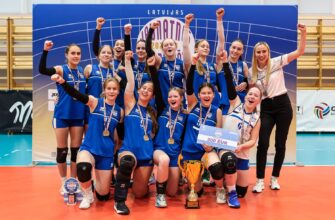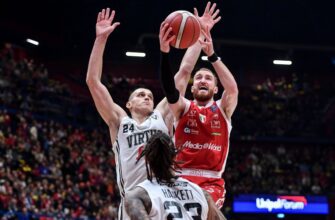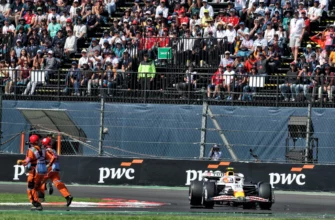Seeking to boost player development and address the changing landscape of women`s lower-league soccer in the U.S., the NWSL has submitted a proposal to U.S. Soccer for a new Division II league set to commence in 2026.
According to documents seen by CBS Sports, the official application, a six-page letter signed by NWSL Commissioner Jessica Berman, was submitted to U.S. Soccer CEO and Secretary General JT Batson on April 1. Berman drew a parallel to minor-league baseball in the letter, stating it`s “imperative” for the NWSL to establish a strong pathway for elite athletes to support the “explosive growth” of the current Division I league. The planned Division II league is envisioned as a crucial bridge between college soccer and the professional level, allowing young talents to adapt to the “technical, tactical, and mental demands” of top-tier play.
Eight teams affiliated with the current NWSL Division I league are expected to participate in the Division II league`s first season: Bay FC, Kansas City Current, North Carolina Courage, NJ/NY Gotham FC, Orlando Pride, Racing Louisville, Seattle Reign, and the Washington Spirit. These Division II teams are planned to utilize the same venues as their parent Division I clubs and will compete in a standard double round-robin format, playing each opponent home and away. Following the 14-game regular season, a playoff structure will feature the top four teams, with the No. 1 seed playing No. 4 and No. 2 playing No. 3, culminating in a championship game between the winners.
In a subsequent statement to CBS Sports, the league confirmed the submission:
The National Women`s Soccer League has formally submitted an application and supporting documentation for a new Division II league to the United States Soccer Federation. As a global leader in the women`s soccer landscape both on and off the pitch, the NWSL and its member clubs are committed to growing our sport in meaningful ways. The demand for professional soccer has never been higher. We look forward to working to build a strong foundation for future generations of players, officials and coaches and ensure the continued advancement of the women`s game.
Utilizing established NWSL clubs helps the proposed Division II league satisfy or surpass numerous requirements set by U.S. Soccer. The federation mandates a minimum of six teams in the first year and eight by the third year for a Division II league. Additionally, at least half the teams must be located in metropolitan areas with populations over 500,000, and stadiums must accommodate at least 2,000 spectators. All eight teams identified for the NWSL`s inaugural Division II season already meet these population and stadium criteria.
Within the first four years, all existing NWSL Division I teams are anticipated to establish an affiliated second-tier side. By this time, the NWSL is projected to have at least 16 clubs, including the upcoming expansion teams in Boston and Denver starting next year. The Division II league is also intended to eventually include teams not currently affiliated with the NWSL.
This secondary level is envisioned as a venue for clubs to enhance roster depth, particularly since the college draft has been discontinued. It will create a structured pathway for player growth and offer a platform for players recovering from injuries to regain match fitness before returning to the Division I squad. The league will also provide opportunities for coaches, referees, and administrative staff to gain experience and develop their skills. Furthermore, the NWSL views the Division II competition as an opportunity to experiment with “creative marketing strategies to grow the fan base of the women`s game.”
Moreover, these second-tier teams would have the flexibility to schedule international friendly matches against non-league opponents and compete in any international tournaments they might qualify for.
The Evolving Landscape of U.S. Women`s Soccer
The proposed Division II league is intended to function like a reserve league, a model commonly used in various sports. While the NWSL mentioned baseball, parallels exist within soccer, such as most MLS teams having a developmental side in MLS Next Pro, a third-tier men`s league in the U.S. European football also frequently utilizes this structure, with many top clubs fielding reserve teams in lower divisions.
Although this developmental pathway model has long been established globally, it`s less prevalent in women`s sports due to historical underinvestment. Currently, the U.S. lacks an official women`s Division II soccer league. However, WPSL Pro recently declared its intention to launch as a Division II league. WPSL Pro, supported by the amateur Women`s Professional Soccer League, initially aimed for Division III status but upgraded its plans following new investment from Cleveland Soccer Group, a group that previously sought an NWSL expansion spot.
Also targeting a 2026 start, WPSL Pro is awaiting approval from U.S. Soccer. If sanctioned, it would compete with the NWSL`s proposed Division II. U.S. Soccer has previously sanctioned multiple leagues at the same level; for instance, the USL and the defunct NASL both held Division II status in the men`s structure. Currently, the U.S. women`s soccer landscape features two Division I leagues, the NWSL and the USL Super League. The USL is also planning a second men`s Division I league, USL Division One, for 2027, alongside MLS.
The Focus on Youth Development
The NWSL is experiencing rapid growth, fueled by rising interest and investment in women`s sports. This momentum has enabled significant changes to player acquisition rules, such as increasing international spots and eliminating the college draft. Increased resources allow the league and its clubs to tackle long-standing challenges in player development, a topic Commissioner Berman highlighted at NWSL Media Day in January.
The resources required for our clubs to enhance their scouting have spurred vital discussions at the board level regarding investment in the `path to pro,` which I believe represents the league`s next phase of growth. This aligns with the decision to remove the draft and implement full free agency; a strong talent pipeline is crucial. We have concepts and strategies to integrate this into the league`s development. The U.S. possesses immense talent, arguably more than any other nation, and we see a significant chance to leverage this as a driving force for youth investment.
Various key figures in women`s soccer have recently shown heightened interest in establishing clear pathways for young players to reach the professional ranks. Notable examples include U.S. women`s national team head coach Emma Hayes, who is starting to utilize the U-23 team in a reserve capacity for the senior squad, and, significantly, Michele Kang, the Washington Spirit owner who contributed $30 million to U.S. Soccer in November specifically for girls` and women`s initiatives.








